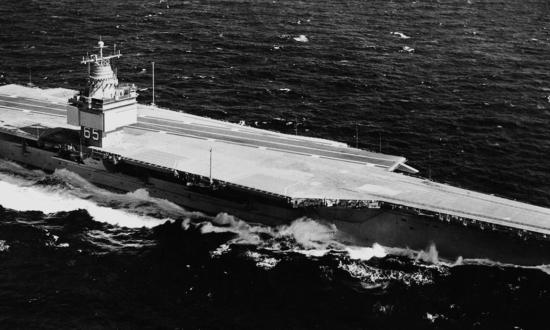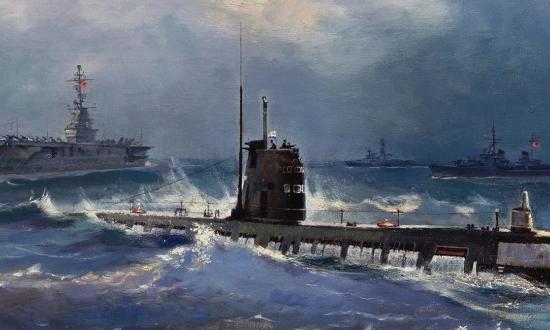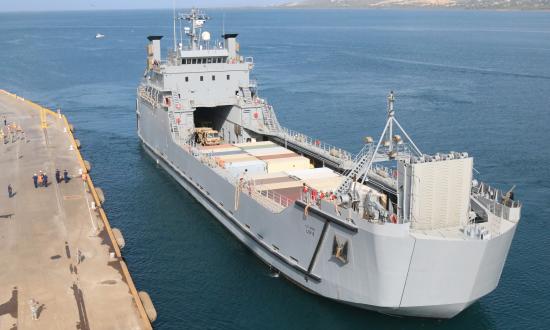Cold War ‘Embeddedness’
Lieutenant Ross Webber, U.S. Naval Reserve (Retired)
I found the articles on the U.S. Marines’ early 20th-century involvement in Latin America, especially their “embeddedness” in local forces, very interesting (“Never Known a Day of Peace,” and “A U.S. Marine in the Guardia Nacional”). It reminded me of my 1950s experience as a U.S. Navy senior shore patrol officer in Santiago de Cuba, Port-au-Prince, and Ciudad Trujillo (present-day Santo Domingo). In every case, I was working with and riding in vehicles of the local authorities. As a 24-year-old lieutenant (junior grade), I generally was aware of the various regimes’ unsavoriness, but not knowledgeable of their true evil until years later. Still, my patrol was off the USS Cotten (DD-669), which had no Jeeps on board, so we had to use the resources available. As we moved through various prostitution houses breaking up fights, I sometimes wondered whose mission had priority.
The mission ambiguity was especially evident in the British Crown colony of Aden, where I was a token U.S. presence in a Royal Air Force patrol. This was shortly after the 1956 Anglo-French-Israeli invasion of Egypt that shut down the Suez Canal. In the midst of Ramadan, the Brits would march into a bar and grab some local and drag him out to their police lorry. Indeed, the only real fight we broke up was on the pier between British tars and American bluejackets. Because of President Dwight Eisenhower’s opposition to the invasion and interposition of U.S. Navy ships in the conflict, the Royal Navy men thought the United States had stabbed them in the back. Thankfully, the British officers understood the need to sometimes cooperate with suspect allies and invited us to the Governor’s House, where we happily consumed their Pimm’s Cups.
All this was a valuable experience in my later life when I had to work with those whose interests were sometimes divergent from mine.
Quebec’s Upstream Ships
Richard Cazeault
Nice update by Sam Allison and Jon Bradley on the siege of Quebec City (“‘The Most Hazardous & Difficult Task’”). To add to the story, there was a French fleet that got around the British fleet before sailing upriver to the city.
Corsair Jacques Kanon with 11 armed merchant ships and Captain Jean Vauquelin with five frigates had sailed together from Bordeaux, France, on 25 March 1759 and reached Quebec in May, just before the British arrived, with supplies and ammunition for the defenders. Vauquelin, with two of his ships, stayed in the city, where he was senior naval officer. Then, probably commanded by Kanon, part of the fleet went farther up the St. Lawrence River to help resupply the city.
At the end of November, after the British fleet had withdrawn, Kanon attempted to sail eight ships past Quebec and back to France. However, three of the ships grounded and were lost. In turn, the French captured a British schooner. Five of Kanon’s ships made it back to France.
My ancestor Jean Baptist Casault was a navigator on board one of the eight ships but did not make it home. He settled in Montmagny, Quebec, and became a farmer.
Brit Admiral’s WWII Legacy
Senior Chief Petty Officer Paul H. Sayles, U.S. Navy (Retired)
I would like to add a postscript to the well-researched article “The Most Hazardous & Difficult Task.” The Royal Navy operated a Combined Operations Training Centre in Egypt during World War II. In what appears to be a nod toward Admiral Charles Saunders and the Quebec operations, it was named HMS Saunders. Because all naval personnel were required to be assigned to a ship, shore installations were given ship names.
I first became interested in Admiral Saunders several decades ago when I came across a Royal Navy Long Service and Good Conduct Medal that had been presented to a sailor who happened to be serving “on board” HMS Saunders.
Torpedoes’ Three Problems
Paul Merkle
Thank you for another great issue (October). I was particularly intrigued by Frank Blazich Jr.’s article on the Mk 6 magnetic torpedo exploder (“Pieces of the Past”), which asks the question: How would the course of the Pacific war have been different if the exploder performed as designed from the beginning of the conflict?
I found his explanation of the complex workings of the Mk 6 fascinating. This is the first account I have read that attempts to describe the mechanics of the device, and it makes a very nice contribution to the sad story of U.S. Navy torpedo performance in the first half of the war.
I would like to remind readers that there were three problems with World War II U.S. Navy submarine torpedoes, and each one hid the others. The first problem was depth control. The Bureau of Ordnance and the torpedo factory in Newport, Rhode Island, had conducted faulty tests with the depth mechanism, and it operated in such a way that torpedoes fired in action ran considerably deeper than intended. It was then found that even when the weapons ran at the correct depth, they exploded prematurely or failed to explode altogether. After rancorous exchanges between submarine captains and the bureau, the magnetic feature was eventually deactivated, as Dr. Blazich explains. As he also indicates, with the magnetic feature turned off, the fragile nature of the contact mechanism was then identified.
The Germans and the British also had problems with their torpedo exploders, but both addressed them early enough to have an effective weapon when it counted. The U.S. Navy did not work out its problems until the fall of 1943. After that, U.S. submarines made a very significant contribution by sinking most Japanese merchant vessels and effecting a crippling blockade of strategic material for their war effort. Yes, given aggressive submarine captains, a serviceable torpedo at the beginning of the war might have brought that result many months earlier and shortened the war.
Clarification: The battleship depicted on the Battle of Leyte Gulf stamp (“Pieces of the Past”) is the USS Pennsylvania (BB-38).






